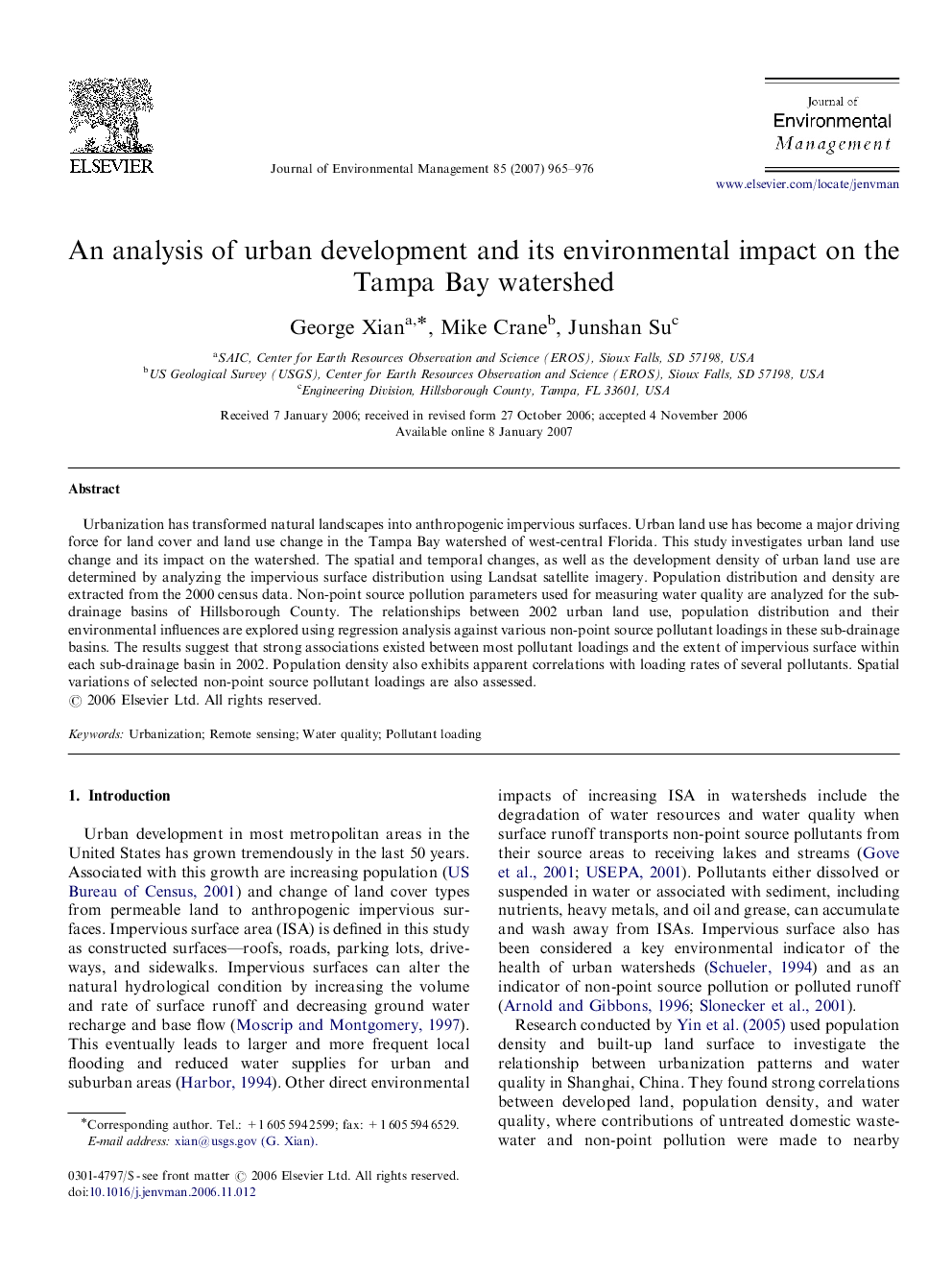| Article ID | Journal | Published Year | Pages | File Type |
|---|---|---|---|---|
| 1058500 | Journal of Environmental Management | 2007 | 12 Pages |
Urbanization has transformed natural landscapes into anthropogenic impervious surfaces. Urban land use has become a major driving force for land cover and land use change in the Tampa Bay watershed of west-central Florida. This study investigates urban land use change and its impact on the watershed. The spatial and temporal changes, as well as the development density of urban land use are determined by analyzing the impervious surface distribution using Landsat satellite imagery. Population distribution and density are extracted from the 2000 census data. Non-point source pollution parameters used for measuring water quality are analyzed for the sub-drainage basins of Hillsborough County. The relationships between 2002 urban land use, population distribution and their environmental influences are explored using regression analysis against various non-point source pollutant loadings in these sub-drainage basins. The results suggest that strong associations existed between most pollutant loadings and the extent of impervious surface within each sub-drainage basin in 2002. Population density also exhibits apparent correlations with loading rates of several pollutants. Spatial variations of selected non-point source pollutant loadings are also assessed.
